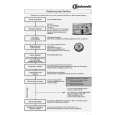|
|
|
Kategorie
|
|
Informacje
|
|
Polecamy
|
|
|
 |
|
|
Dla tego produktu nie napisano jeszcze recenzji!
 ;
jedyne do czego mogę mieć zastrzeżenie to jakość zdjęć zawartych w przesłanej instrukcji serwisowej ponieważ są fatalnej jakości, praktycznie nieczytelne. tak poza tym jestem zadowolony to jest to czego szukałem.
 ;
Wszystko w porządku.
Instrukcja czytelna i kompletna.
Dziękuję.
all right!
thank you.
 ;
Bardzo dobra instrukcja. Zawiera wszystko co potrzeba, polecam!
 ;
Instrukcja jest OK. Schematy czytelne, opisane niektóre procedury.
 ;
Instrukcja bardzo czytelna. zawiera co potrzeba. Polecam
1-3-1. When the 8.25 MHz signal appears at CPUCK � Check the XRD, XWRH and CS0X signal. Observe XRD (pin-u;), XWRH (pin-ua), and CS0X (pin-tk) of SYSCON (IC104) with an oscilloscope. If these pins are fixed to either �L� (0V) or �H� (3.3V), or if these pins stay in the center voltage, check the followings. Check if the signal line does not have the defective soldering. Check if the signal line is short-circuited with other signal lines. If you cannot find any problem t SYSCON (IC104) is defective. � HA [0 to 21] signal and HD [0 to 15] signal check Observe HA [0 to 21] (pins-<z/x to <z/. , <zzz to <zz, , <zx/ , 1 to 5) of SYSCON (IC104) and HD [0 to 15] (pins-ig to <z// ) with an oscilloscope. If these pins are fixed to either �L� (0V) or �H� (3.3V), or if the HA pin stays in the center voltage, check the followings. (HD stays in the center voltage when it is normal.) t Check if the signal line does not have the defective soldering, or is short-circuited with other signal line or SYSCON (IC104) is defective. � Reset signal check Check if XFRRST (pin-uh) of SYSCON (IC104) normal or not. The signal starts up at the same time as Vcc t Defective soldering. If the trouble does not apply to any of the above-described phenomenon, SYSCON (IC104) or ROM (IC106 or IC107) is defective. 1-3-2. When the 33 MHz signal appears at CPUCK � WAIT signal check Observe XWAIT (pin-yj) of SYSCON (IC104) with an oscilloscope. If it is fixed to �L� (0V). t Observe CS2X to CS5X (pinsy; to yd). If CS2X or CS3X is �L�. t AVD (IC403) has defective soldering or AVD is defective. If CS4x or CS5X is �L�. t ARP & SERVO (IC301) has defective soldering or ARP & SERVO is defective. If any one of the above is not �L�. t XWAIT or CSnX is short-circuited or has the defective soldering or AVD (IC403) is defective or ARP & SERVO (IC301) is defective. Center voltage t The XWAIT line has defective soldering or is short-circuited or AVD (IC403) is defective or ARP & SERVO (IC301) is defective or SYSCON (IC104) is defective. � CSnX signal check Observe CS0X to CS5X (pins-tk to yd) of SYSCON (IC104) with an oscilloscope. If they are fixed to �L� (0V) or if to center voltage t Check that the ICs do not have the defective soldering or is shortcircuited with the other signal lines or SYSCON (IC104) is defective. CS0X: ROM (IC106 or IC107) CS2X, CS3X: AVD (IC403) CS4X, CS5X: ARP & SERVO (IC301) If the trouble symptom does not apply to any of the above phenomenon, SYSCON (IC104) or ROM (IC106 or IC107) is defective.
2. Test mode menu is displayed but the machine stops when menu is selected 2-1. AVD (IC403) check Observe SDCLKO (pin-<zxm ) of AVD (IC403) with an oscilloscope. 95 MHz t No problem 27 MHz t Observe the XRST, HA, HD, XRD, XWRH INT and CS signal waveform at the respective pins of AVDEC, AVD (IC403) is defective. If the signal is other than the above frequencies t AVD (IC403) 27MHz signal line (CLKI (pin-<zb, ), SCLKIN (pin<zn/ )) is short-circuited, IC mount is defective, AVD (IC403) is defective, PLL (IC103) is defective. 2-2. INT signal check Observe INT0 to 2 (pins-qh to qk) of SYSCON (IC104) with an oscilloscope. If they are fixed to �L� (0V) or fixed to the center voltage t Check that the ICs do not have the defective soldering, or are short-circuited, SYSCON (IC104) is defective, or the following ICs are not defective. INT0: AVD (IC403) INT1, INT2: ARP & SERVO (IC301) 2-3. If any abnormality cannot be confirmed by the above-described checks, check the CS signal that is currently output. The CS signal other than CS0X is being output. t IC mount is defective or the IC is defective depending on the moving CS signal. CS2X, CS3X: AVD (IC403) CS4X, CS5X: ARP & SERVO (IC301) If the trouble is not applicable to any of the above phenomenon, SYSCON (IC104) or ROM (IC106 or IC107) is defective. 3. If the message �SDSP No Ack� appears after the menu is displayed. 3-1. ARP & SERVO clock signal check Check frequency of CLKIN (pin-<zb/ ) 33 MHz t Normal Frequency other than 33 MHz t CLKIN is short-circuited or defective soldering or PLL (IC103) is defective or ARP & SERVO (IC301) is defective 3-2. ARP & SERVO (IC301) PLL oscillation check Observe PLCKO (pin-ij) of ARP & SERVO (IC301) with an oscilloscope. If the pin is fixed to either �L� (0V) or �H� (3.3V). If XRST if fixed to �L�. XRST has the defective soldering, In all other cases. ARP & SERVO (IC301) is defective If it is oscillating. HA [0 to 7] are HD [8 to 15] are short-circuited, check XSDSPIT and XSDSPCS or ARP & SERVO (IC301) is defective. 4. If trouble occurs at the specific item of the �Diag All Check�. IC mount of the NG item is defective or IC is defective. 5. Picture and audio are not output. Check connection of CN601 Check for the defective connection of flat cable and check of damage of the flat cable.
6-12
|
|
 |
> |
|

